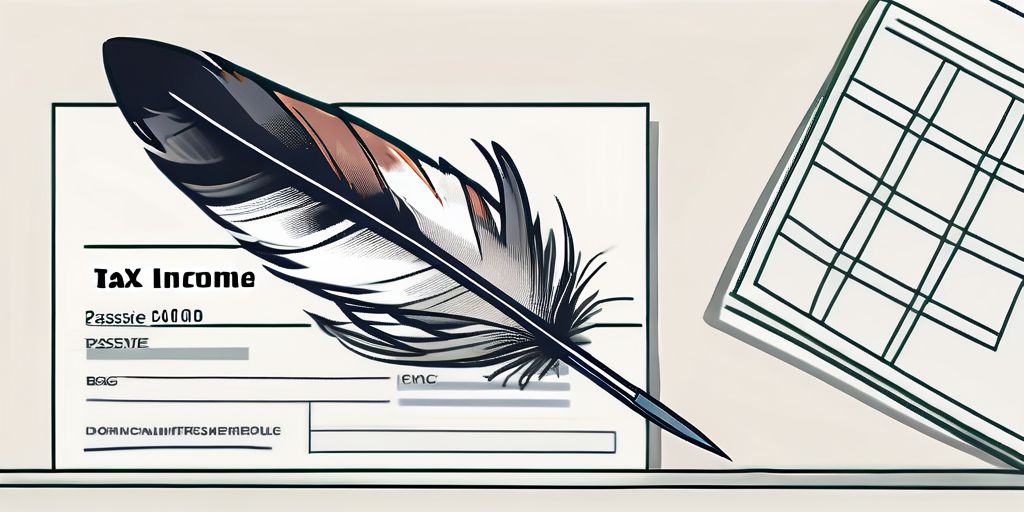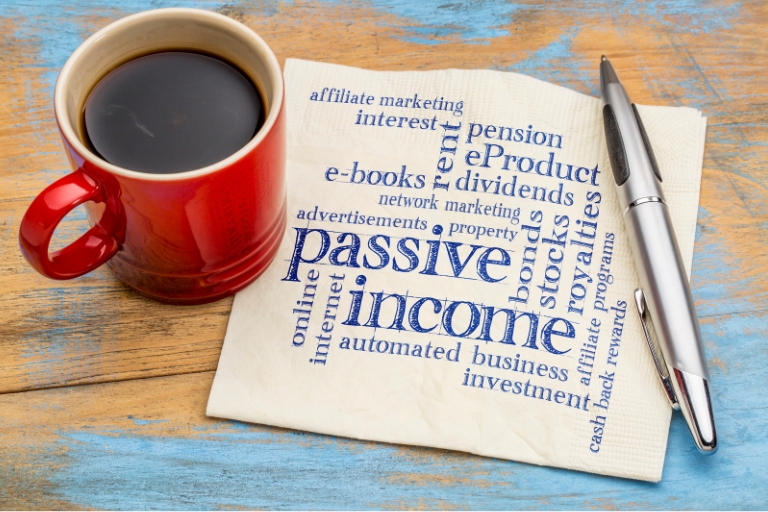Welcome, dear reader, to the thrilling world of tax preparation for passive income! Yes, you read that right. We’re about to embark on a rollercoaster ride of tax codes, forms, and deductions that’s sure to leave you laughing all the way to the bank. Or at least, laughing all the way to your accountant’s office.
Now, you might be thinking, “Tax preparation? Thrilling? You’ve got to be kidding me!” But trust us, once you understand the ins and outs of passive income tax, you’ll be the life of every party. Well, maybe not every party, but definitely any party attended by accountants or tax lawyers. So, without further ado, let’s dive into the hilarious world of passive income tax preparation!
What is Passive Income?
Passive income, despite what the name might suggest, is not money that’s too lazy to get off the couch. No, passive income is money that you earn without having to actively work for it. It’s like having a golden goose that lays golden eggs, except the goose is your investment or rental property, and the eggs are the money you earn from it.
Examples of passive income include rental income, dividends, interest, royalties, and profits from a business in which you’re not actively involved. It’s the dream, really. Earning money while you sleep, or while you’re on a beach sipping a piña colada. But, as with all good things, there’s a catch. And that catch is called tax.
Types of Passive Income
Not all passive income is created equal, at least not in the eyes of the taxman. There are different types of passive income, and each type is taxed differently. Let’s take a closer look at these types, shall we?
First, there’s rental income. This is the money you earn from renting out a property, like a house or an apartment. The taxman considers this passive income because, unless you’re the world’s most hands-on landlord, you’re not actively working to earn this income.
Then, there’s dividend and interest income. This is the money you earn from your investments, like stocks or bonds. Again, unless you’re a Wall Street trader, you’re not actively working to earn this income. Therefore, it’s considered passive income.
Finally, there’s business and royalty income. This is the money you earn from a business in which you’re not actively involved, or from royalties for something you created, like a book or a song. Once again, because you’re not actively working to earn this income, it’s considered passive income.
Taxation of Passive Income
Now that we know what passive income is, let’s talk about how it’s taxed. And let me tell you, it’s a real hoot! If by ‘hoot’ you mean ‘complicated process that involves a lot of forms and calculations.’

First off, it’s important to know that passive income is generally taxed at your ordinary income tax rate. This means that the more passive income you earn, the higher your tax rate could be. So, while earning passive income is great, it’s not exactly a free ride to Easy Street.
Reporting Passive Income
When it comes to reporting your passive income, the taxman doesn’t just take your word for it. No, you have to provide proof of your income. And by ‘proof,’ we mean ‘a whole bunch of forms.’
For rental income, you’ll need to fill out Schedule E of your tax return. This form asks for information about your rental income and expenses, and it’s where you’ll report any profit or loss from your rental property.
For dividend and interest income, you’ll need to fill out Schedule B of your tax return. This form asks for information about your dividend and interest income, and it’s where you’ll report any profit or loss from your investments.
For business and royalty income, you’ll need to fill out Schedule C of your tax return. This form asks for information about your business or royalty income and expenses, and it’s where you’ll report any profit or loss from your business or royalties.
Deductions and Credits
Now, here’s where things get really exciting. Or as exciting as tax preparation can get, anyway. You see, when it comes to passive income, there are a number of deductions and credits you can claim to reduce your tax liability. And who doesn’t love saving money on taxes?
For rental income, you can deduct expenses like mortgage interest, property taxes, maintenance and repairs, insurance, and depreciation. You can also deduct any expenses related to managing your rental property, like advertising costs or property management fees.
For dividend and interest income, you can deduct investment expenses, like advisory fees or safe deposit box fees. However, these deductions are subject to certain limitations, so be sure to consult with a tax professional before claiming them.
For business and royalty income, you can deduct business expenses, like office supplies, travel expenses, and advertising costs. You can also deduct any expenses related to creating or maintaining your royalties, like copyright registration fees or professional editing services.
Conclusion
And there you have it, folks! A hilarious and comprehensive guide to tax preparation for passive income. We’ve laughed, we’ve cried, we’ve filled out a bunch of tax forms. But most importantly, we’ve learned that tax preparation doesn’t have to be a chore. It can be a fun and rewarding process, especially when you’re saving money on taxes!
So, the next time you’re at a party and someone asks you about passive income tax, you can regale them with your newfound knowledge. And who knows, you might just become the life of the party. Or at least, the life of the tax preparation party. And isn’t that what we all aspire to be?


